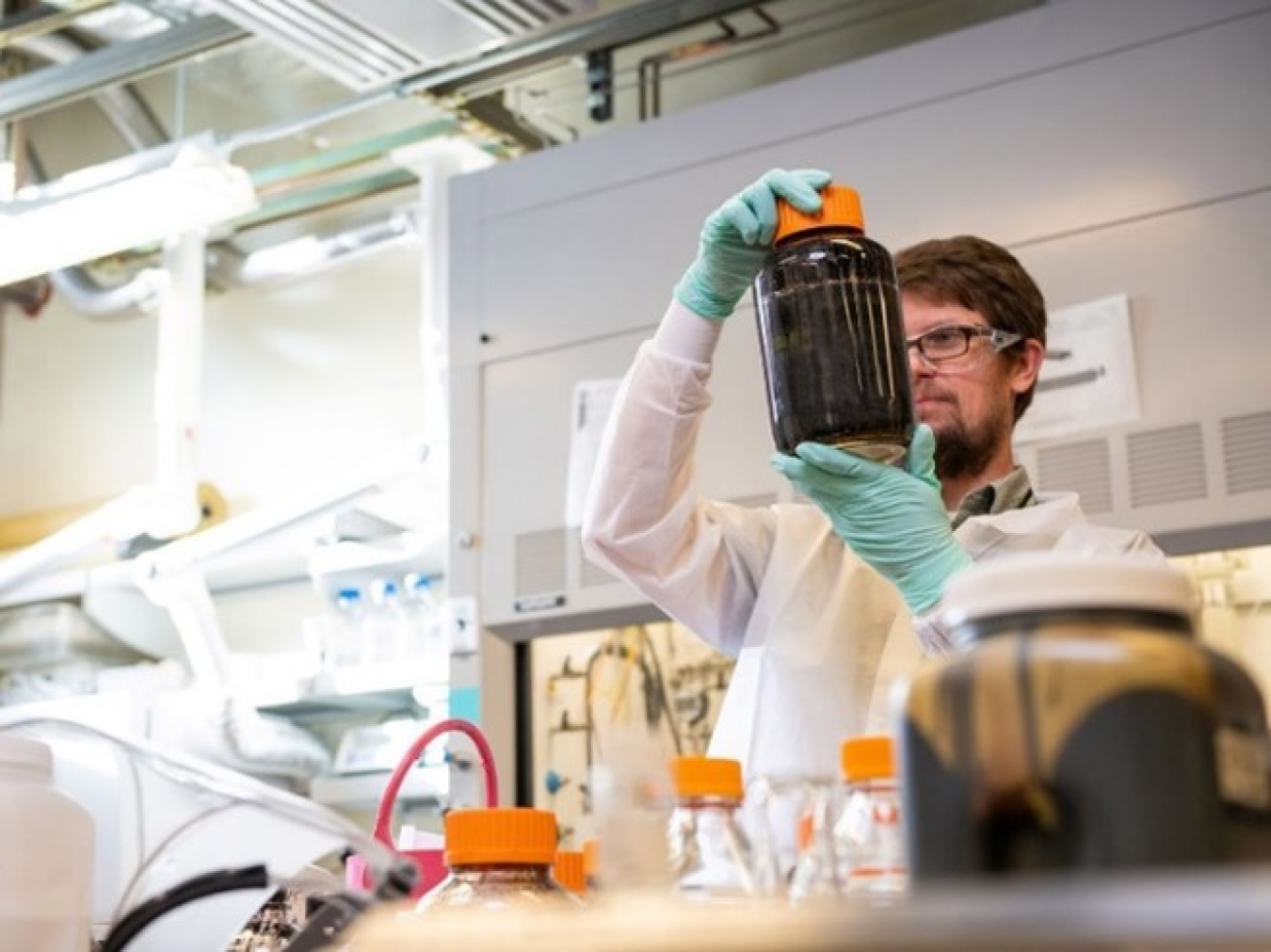
Author: Dr. Asanga Padmaperuma
Senior Research Chemist in the Energy Processes and Materials Division at Pacific Northwest National Laboratory
Read Asanga's bio ►
Meet the other bloggers ►
Return to Bioprose blog ►
Techno-economic analysis is the first to model PNNL technology across wastewater facilities
Wastewater—American households produce billions of gallons of it daily, from flushing toilets to cleaning clothes.
But wastewater is not just a waste. The energy, nutrients, and metals contained in the untreated sludge at thousands of the nation’s wastewater resource recovery facilities have the potential to be transformed into a renewable, cost-effective feedstock for liquid transportation biofuels.
A team of researchers from the Pacific Northwest National Laboratory (PNNL) conducted a techno-economic analysis to investigate how cost-effective it would be to use a newer process—hydrothermal liquefaction, or HTL— for treating wastewater solids by converting them to biofuels. By modeling the long-term economics, they found that HTL can be economically deployed at more than 1,000 wastewater resource recovery facilities, where it can convert more than three-quarters of untreated sludge solids into biocrude. The biocrude immediate, which is similar in appearance to petroleum crude oil, can be used directly or upgraded in a refinery to a variety of liquid transportation fuels.
The analysis, which was supported by the U.S. Department of Energy’s Bioenergy Technologies Office, is summarized in the Journal of Environmental Management.
HTL in real-world scenarios
Wastewater resource recovery facility managers face a myriad of planning challenges, such as
- Aging infrastructure and equipment,
- Increased demand for services,
- Emerging regulatory requirements
- Rising costs of operations, such as energy, labor, chemicals, and disposal.
Municipalities need to find ways to reduce costs while increasing treatment coverage and performance. According to previous studies, treated wastewater solids from publicly owned facilities contain energy, nutrients, and metals valued at around $550 per ton, versus $300 – $800 per ton that plant owners spend to treat and dispose of biosolids. Some of this value is captured by using biosolids as a fertilizer or biogas for heat and power, but most is lost with disposed residuals. More efficient and comprehensive materials recovery represents a significant revenue opportunity for these facilities.
The PNNL-developed HTL process is an efficient thermochemical waste-to-energy conversion technology that can rapidly convert solid sludge and other biosolids directly into versatile biocrude. The technology benefits the wastewater sector because it is more efficient at destroying solids and recovering carbon than traditional sludge treatment processes and creates a new source of revenue—fuel sales—that helps offset costs and improve environmental services.

PNNL performed a techno-economic analysis to investigate the feasibility of using hydrothermal liquefaction to convert wastewater into biofuel. Credit: Andrea Starr | Pacific Northwest National Laboratory
To evaluate the economic feasibility of integrating HTL conversion technology into wastewater treatment operations, the PNNL research team performed a techno-economic analysis for more than 15,000 publicly owned wastewater resource recovery facilities across the United States. The evaluation covered a 30-year operating period and factored in the facilities’ capital and operating costs, commercial rate of return, biofuels revenue, and avoided disposal savings to determine the minimum facility size that could economically support the assessed methods. HTL performance was also compared to the expanded use of a widely adopted sludge treatment process—anaerobic digestion—to produce renewable natural gas for vehicle fuel.
The analysis is the first to model HTL technology deployment across the real-world fleet of wastewater resource recovery facilities in the United States.
An “HTL” of a promising process
By modeling long-term project economics, the team discovered that HTL can be deployed economically at wastewater resource recovery facilities with a minimum wastewater influent flow of nearly 5 million gallons per day. Facilities meeting this minimum daily threshold could process 79% of the nation’s sludge to produce nearly 1 billion gallons of biocrude each year.
The team also determined that integrating HTL into the existing fleet of treatment facilities could increase total national energy recovery from wastewater sludge by 188% and reduce total disposal biosolids costs by 43%—or $1.4 billion per year—from current practice.
Compared to anaerobic digestion, HTL has the potential to:
- Recover more carbon than biogas production
- Achieve greater reductions in treated wastewater solids mass
- Replace a sensitive biological process with a reliable chemical reaction
- Reduce reliance on land application, landfilling, and incineration.
Simultaneously reducing sludge management costs while producing a valuable liquid fuel could help HTL have significant positive impacts on wastewater treatment sector economics and operations. There may even be synergies between HTL and anaerobic digestion, which researchers are currently exploring.
In addition to sharing the news about next-generation conversion technologies with municipalities planning large capital investments or designing new treatment facilities, the team plans to investigate the potential financial and environmental benefits of blending wastewater solids with other wet organic wastes, such as manures, food waste, fats, oils, and greases to support very large biorefineries across the nation.

